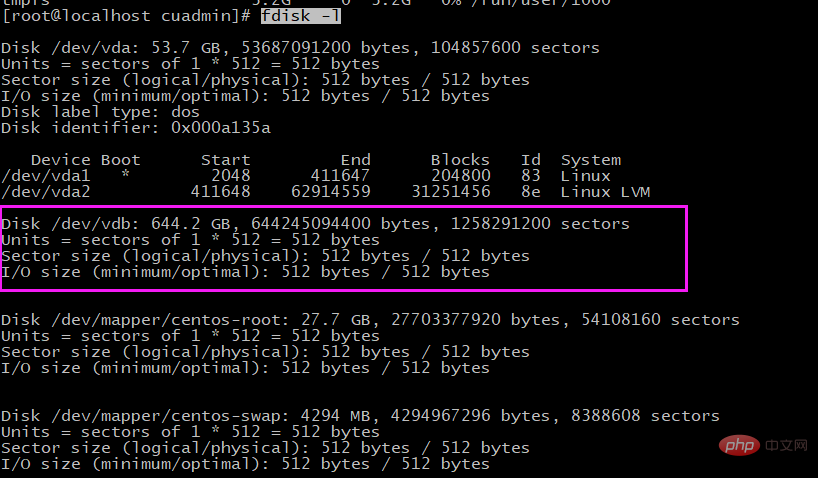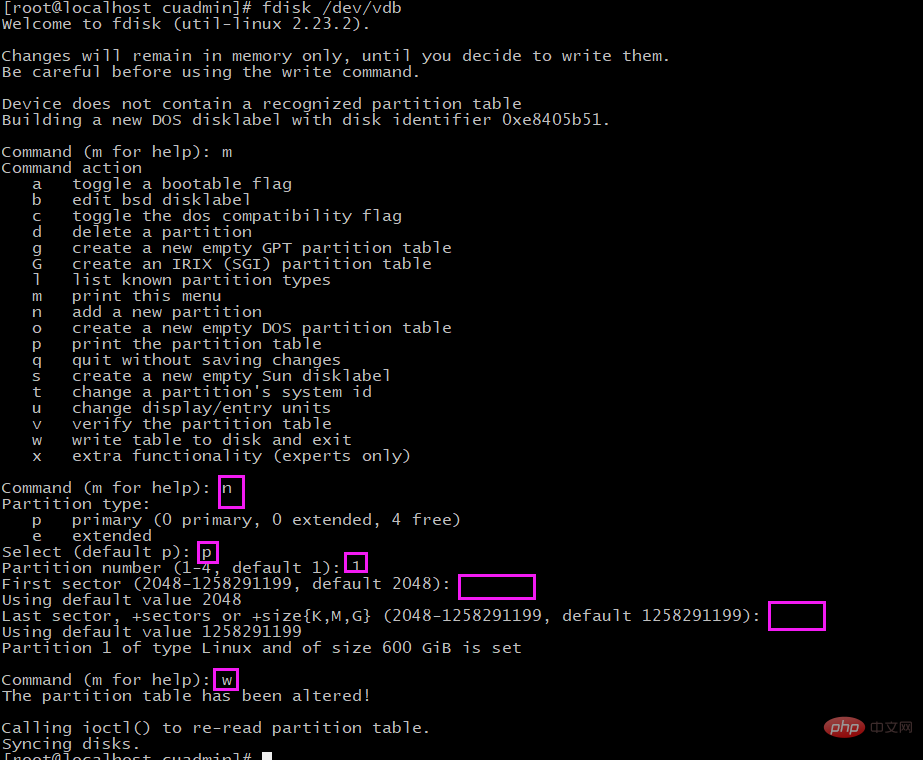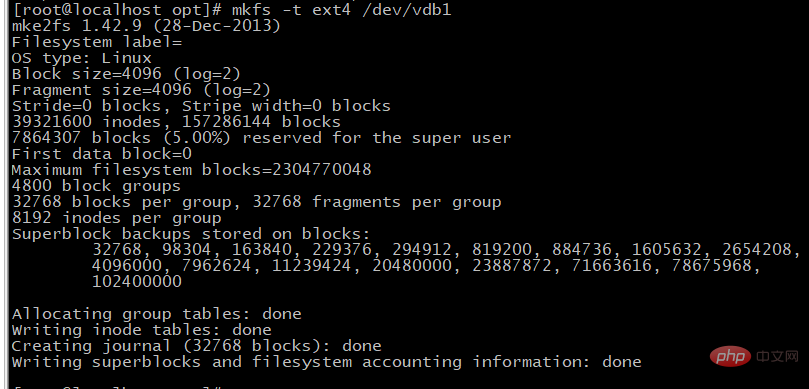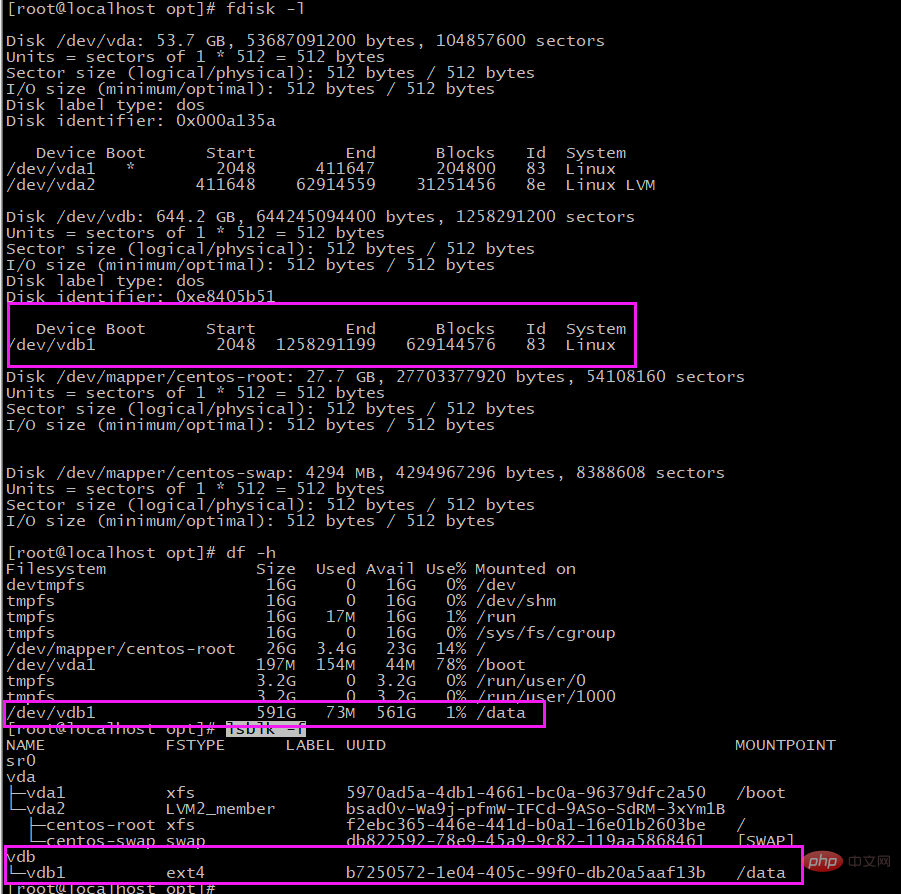 Operation and Maintenance
Operation and Maintenance
 Linux Operation and Maintenance
Linux Operation and Maintenance
 What does linux hard disk mount mean?
What does linux hard disk mount mean?
What does linux hard disk mount mean?
Linux hard disk mounting refers to attaching a device to an existing directory; mounting refers to the operating system making a computer file on a storage device (such as a hard disk, CD-ROM or shared resource) A process by which directories are made accessible to users through a computer's file system.

#The operating environment of this tutorial: linux5.9.8 system, Dell G3 computer.
What does Linux hard disk mounting mean?
Linux disk mounting
1. Mounting concept
Mounting (mounting) refers to the use of a storage device by the operating system The process by which computer files and directories on a computer (such as a hard drive, CD-ROM, or shared resource) become accessible to users through the computer's file system.
In the Windows operating system: Mounting usually refers to assigning a drive letter to a disk partition (including a virtualized disk partition).
In the Linux operating system: It refers to attaching a device (usually a storage device) to an existing directory.
2. Check the disk status (mounted information)
df -h

3. Check the current Disk partition status
If there is no output content, this situation means that the user rights are insufficient. You need to use root to use
fdisk -l

to see clearly There is still a lot of unused space in /dev/vdb
4. Partition
fdisk /dev/vdb

Check the partition situation
lsblk

5. Formatting
mkfs.xfs /dev/vdb1mkfs -t ext4 /dev/vdb1


7. Mount
Mount the device /dev/vdb1 to the /data directory
mkdir /datamount /dev/vdb1 /data
8. Check the situation after mounting
df -hfdisk -llsblk -f

9. Implement automatic mounting
Implement automatic mounting by modifying /etc/fstab. After the addition is completed, execute mount -a. It can take effect
vim /etc/fstab# 添加一行/dev/vdb1 /data ext4 defaults 0 0

10. Restart verification
After mounting, be sure to restart and verify it. If you mount it incorrectly, disappear, you can proceed to the next step of installation, otherwise all the things you installed will be formatted
If you find that the mount has disappeared after restarting, check what is configured and mounted in vim /etc/fstab Not consistent.


Recommended study: "linux video tutorial"
The above is the detailed content of What does linux hard disk mount mean?. For more information, please follow other related articles on the PHP Chinese website!

Hot AI Tools

Undresser.AI Undress
AI-powered app for creating realistic nude photos

AI Clothes Remover
Online AI tool for removing clothes from photos.

Undress AI Tool
Undress images for free

Clothoff.io
AI clothes remover

Video Face Swap
Swap faces in any video effortlessly with our completely free AI face swap tool!

Hot Article

Hot Tools

Notepad++7.3.1
Easy-to-use and free code editor

SublimeText3 Chinese version
Chinese version, very easy to use

Zend Studio 13.0.1
Powerful PHP integrated development environment

Dreamweaver CS6
Visual web development tools

SublimeText3 Mac version
God-level code editing software (SublimeText3)

Hot Topics
 1667
1667
 14
14
 1426
1426
 52
52
 1328
1328
 25
25
 1273
1273
 29
29
 1255
1255
 24
24
 Linux Architecture: Unveiling the 5 Basic Components
Apr 20, 2025 am 12:04 AM
Linux Architecture: Unveiling the 5 Basic Components
Apr 20, 2025 am 12:04 AM
The five basic components of the Linux system are: 1. Kernel, 2. System library, 3. System utilities, 4. Graphical user interface, 5. Applications. The kernel manages hardware resources, the system library provides precompiled functions, system utilities are used for system management, the GUI provides visual interaction, and applications use these components to implement functions.
 vscode Previous Next Shortcut Key
Apr 15, 2025 pm 10:51 PM
vscode Previous Next Shortcut Key
Apr 15, 2025 pm 10:51 PM
VS Code One-step/Next step shortcut key usage: One-step (backward): Windows/Linux: Ctrl ←; macOS: Cmd ←Next step (forward): Windows/Linux: Ctrl →; macOS: Cmd →
 How to check the warehouse address of git
Apr 17, 2025 pm 01:54 PM
How to check the warehouse address of git
Apr 17, 2025 pm 01:54 PM
To view the Git repository address, perform the following steps: 1. Open the command line and navigate to the repository directory; 2. Run the "git remote -v" command; 3. View the repository name in the output and its corresponding address.
 How to run java code in notepad
Apr 16, 2025 pm 07:39 PM
How to run java code in notepad
Apr 16, 2025 pm 07:39 PM
Although Notepad cannot run Java code directly, it can be achieved by using other tools: using the command line compiler (javac) to generate a bytecode file (filename.class). Use the Java interpreter (java) to interpret bytecode, execute the code, and output the result.
 How to run sublime after writing the code
Apr 16, 2025 am 08:51 AM
How to run sublime after writing the code
Apr 16, 2025 am 08:51 AM
There are six ways to run code in Sublime: through hotkeys, menus, build systems, command lines, set default build systems, and custom build commands, and run individual files/projects by right-clicking on projects/files. The build system availability depends on the installation of Sublime Text.
 What is the main purpose of Linux?
Apr 16, 2025 am 12:19 AM
What is the main purpose of Linux?
Apr 16, 2025 am 12:19 AM
The main uses of Linux include: 1. Server operating system, 2. Embedded system, 3. Desktop operating system, 4. Development and testing environment. Linux excels in these areas, providing stability, security and efficient development tools.
 laravel installation code
Apr 18, 2025 pm 12:30 PM
laravel installation code
Apr 18, 2025 pm 12:30 PM
To install Laravel, follow these steps in sequence: Install Composer (for macOS/Linux and Windows) Install Laravel Installer Create a new project Start Service Access Application (URL: http://127.0.0.1:8000) Set up the database connection (if required)
 git software installation
Apr 17, 2025 am 11:57 AM
git software installation
Apr 17, 2025 am 11:57 AM
Installing Git software includes the following steps: Download the installation package and run the installation package to verify the installation configuration Git installation Git Bash (Windows only)



